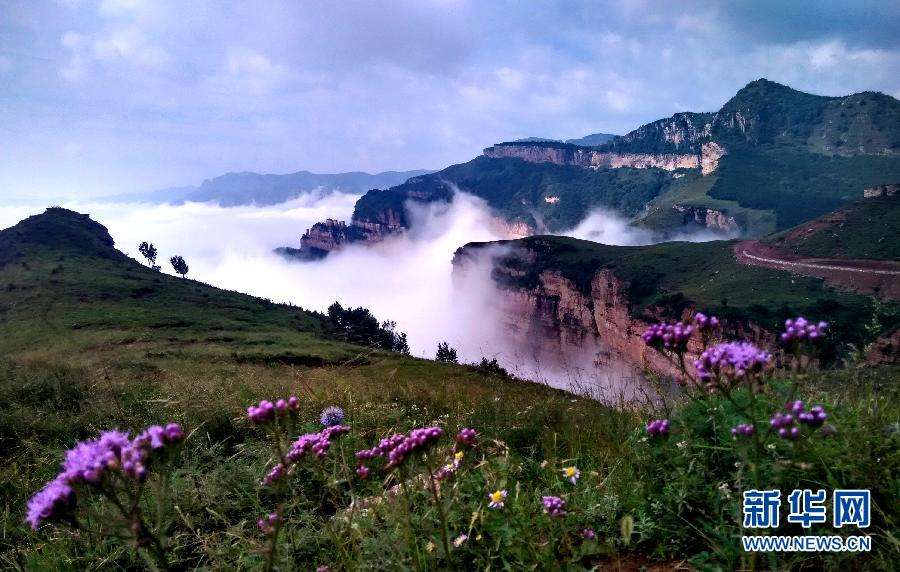


(Photo/Xinhua)
China is committed to promoting green development against the complicated global situation and downward economic pressure.
A report on air pollution in China shows that air quality improved across the country from 2013 to 2018.
The National Air Quality Improvement Report was released by the Ministry of Ecology and the Environment, saying that the average density of PM 2.5 dropped by 48, 39 and 32 percent respectively in the Beijing-Tianjin-Hebei province, Yangtze River Delta and Pearl River Delta.
Complaints about hazy days on social media are increasingly replaced by pictures of blue sky and white clouds.
NASA satellite data showed that China accounted for 25 percent of the global net increase of greenery from 2007 to 2017, topping other countries. Besides, a total of 2,750 nature reserves have been established in China.
China is active in international cooperation when it comes to combating climate change, and works as a key participant, contributor, and leader of building an ecological civilization, said Xu Huaqing from the National Center for Climate Change Strategy and International Cooperation (NCSC).
Statistics indicate that last year, China had cut carbon dioxide emissions per unit of GDP by 46 percent from the 2005 level, fulfilling its commitment to reduce carbon intensity by 40 to 45 percent by 2020.
Besides, China is promoting the International Coalition for Green Development on Belt and Road and the BRI Environmental Big Data Platform, making joint efforts with all countries to implement the 2030 Agenda for Sustainable Development.
China has gone through a turning point of the environmental Kuznets curve (EKC), analyzed Chen Jianpeng with the Development Research Center of the State Council.
The emissions of major pollutants have plateaued after a period of rapid growth. Now the environmental quality is progressing with stability, said Chen.
Experts believe that economic development doesn’t necessarily cause high pollutant emissions. Green development satisfies the ever-growing need for better environment and injects dynamism into economic growth.
The National Bureau of Statistics (NBS) revealed that investments in ecological protection and environmental governance increased by 48 percent year-on-year in the first six months.
The environmental protection industry’s revenue topped 684.5 billion yuan in the first half of this year, seeing an increase of 8.7 percent over the same period last year, according to the China Association of Environmental Protection Industry.
The output of China’s green economy was about 6 trillion yuan in 2018, said Zheng Xinli, executive president of the China Association of Policy Science, at the recently concluded annual meeting of China Council for International Cooperation on Environment and Development.
By 2025, the figure is expected to double and contribute 8 percent to the national GDP, said Zheng.
Chinese President Xi Jinping stressed continuing the strategic resolve in enhancing the building of an ecological civilization.
In China's transition from a phase of rapid growth to high-quality development, pollution control and environmental governance are two major tasks that must be accomplished, he added.
The country is taking steps to spread the garbage classification method, to prevent and control pollution, say no to foreign garbage and develop a system of nature reserves composed mainly of national parks.
 Fire brigade in Shanghai holds group wedding
Fire brigade in Shanghai holds group wedding Tourists enjoy ice sculptures in Datan Town, north China
Tourists enjoy ice sculptures in Datan Town, north China Sunset scenery of Dayan Pagoda in Xi'an
Sunset scenery of Dayan Pagoda in Xi'an Tourists have fun at scenic spot in Nanlong Town, NW China
Tourists have fun at scenic spot in Nanlong Town, NW China Harbin attracts tourists by making best use of ice in winter
Harbin attracts tourists by making best use of ice in winter In pics: FIS Alpine Ski Women's World Cup Slalom
In pics: FIS Alpine Ski Women's World Cup Slalom Black-necked cranes rest at reservoir in Lhunzhub County, Lhasa
Black-necked cranes rest at reservoir in Lhunzhub County, Lhasa China's FAST telescope will be available to foreign scientists in April
China's FAST telescope will be available to foreign scientists in April "She power" plays indispensable role in poverty alleviation
"She power" plays indispensable role in poverty alleviation Top 10 world news events of People's Daily in 2020
Top 10 world news events of People's Daily in 2020 Top 10 China news events of People's Daily in 2020
Top 10 China news events of People's Daily in 2020 Top 10 media buzzwords of 2020
Top 10 media buzzwords of 2020 Year-ender:10 major tourism stories of 2020
Year-ender:10 major tourism stories of 2020 No interference in Venezuelan issues
No interference in Venezuelan issues
 Biz prepares for trade spat
Biz prepares for trade spat
 Broadcasting Continent
Broadcasting Continent Australia wins Chinese CEOs as US loses
Australia wins Chinese CEOs as US loses